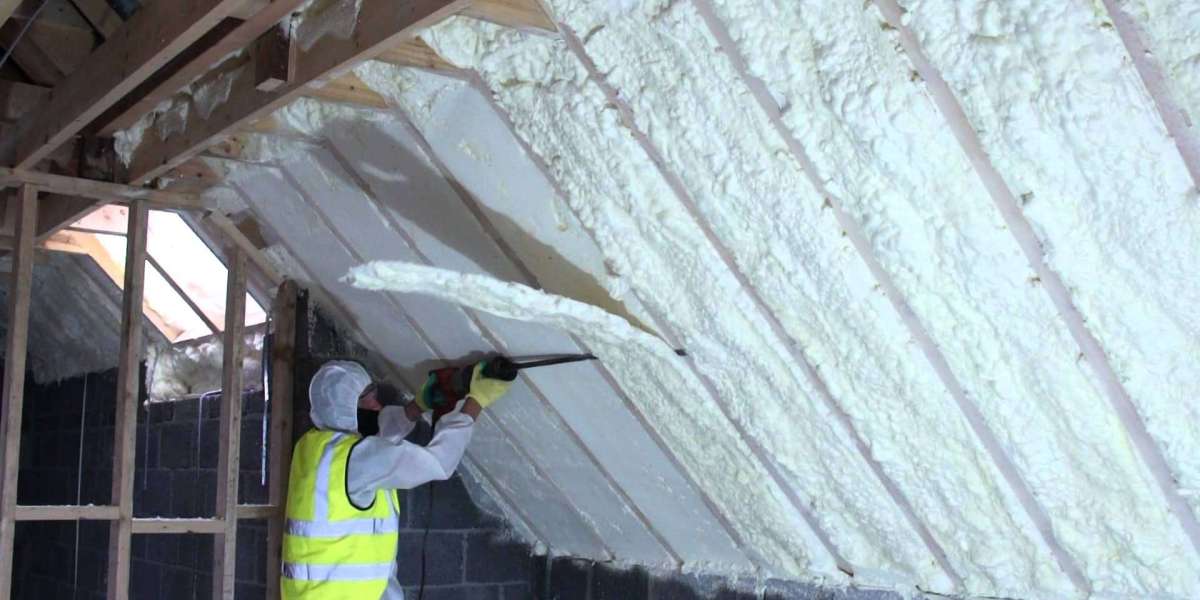The foam insulation market is experiencing robust growth, significantly driven by increasing demand from cold chain logistics and various industrial applications. As global supply chains expand and energy efficiency becomes a critical priority, foam insulation is proving to be an essential material for temperature control, process efficiency, and regulatory compliance across a range of industries.
Rising Importance of Cold Chain Infrastructure
The cold chain—a temperature-controlled supply chain for perishable goods such as food, pharmaceuticals, and chemicals—has grown rapidly due to rising global trade, urbanization, and health consciousness. Foam insulation is integral to cold chain infrastructure because of its ability to:
Maintain consistent internal temperatures
Prevent thermal losses during storage and transit
Reduce energy consumption and operational costs
Key applications include:
Refrigerated warehouses and distribution centers
Insulated transportation vehicles (reefers)
Cold storage units in retail and medical sectors
Polyurethane (PU) and extruded polystyrene (XPS) foams are particularly preferred in cold chain settings due to their high R-value, moisture resistance, and structural strength.
Growing Demand in Industrial Applications
In the industrial sector, foam insulation is used to enhance energy efficiency, thermal protection, and safety in facilities such as:
Petrochemical plants
Manufacturing units
Power generation facilities
Food and beverage processing plants
Here, insulation plays a dual role—preserving process temperatures and reducing operational energy losses. It also helps prevent condensation, corrosion under insulation (CUI), and safety hazards related to extreme temperatures.
Key foam types used:
Rigid polyurethane and polyisocyanurate (PIR) foams for pipelines, tanks, and vessels
Spray foam for seamless, high-performance insulation in irregular surfaces
Factors Driving Market Growth in These Sectors
1. Regulatory and Safety Standards
Government regulations and industry standards mandate strict temperature control and energy management in both cold chain and industrial setups. Foam insulation helps meet:
HACCP and FDA guidelines in food logistics
GDP and WHO standards for pharmaceutical storage
ISO energy management standards in industrial facilities
2. Globalization of Trade and E-commerce
The demand for fresh and frozen foods, temperature-sensitive vaccines, and perishable goods has surged globally. With e-commerce enabling rapid delivery across continents, cold chain infrastructure requires advanced insulation systems to maintain product integrity.
3. Energy Efficiency and Cost Savings
Industrial players are under increasing pressure to reduce energy consumption and greenhouse gas emissions. Foam insulation offers one of the most effective solutions to cut heating and cooling costs in large-scale operations.
4. Rise of Biopharmaceuticals and Vaccines
The pharmaceutical sector, especially post-pandemic, has seen rising investment in cold storage and transportation for biologics and vaccines. Foam-insulated packaging and containers ensure temperature stability critical for product efficacy.
Challenges and Considerations
Initial investment costs for high-quality foam insulation can be substantial, though offset by long-term energy savings.
Sustainability concerns around the recyclability of traditional foam materials are prompting a shift toward eco-friendly alternatives.
Fire safety and chemical exposure regulations require specialized formulations for industrial environments.
Regional Trends
North America and Europe: Strong regulatory frameworks and established cold chains drive steady demand.
Asia-Pacific: Rapid industrialization, growing food exports, and expansion of pharmaceutical logistics are fueling market growth.
Middle East and Africa: Investment in food security and healthcare infrastructure is creating new opportunities for insulated storage and transit systems.
Conclusion
Foam insulation is emerging as a cornerstone of efficient, reliable, and sustainable operations in cold chain and industrial sectors. As global supply chains grow more complex and regulatory expectations tighten, the need for high-performance insulation solutions will only intensify. With its ability to ensure temperature integrity, reduce energy consumption, and support operational efficiency, foam insulation is set to play an increasingly vital role in the future of industrial logistics and infrastructure.








